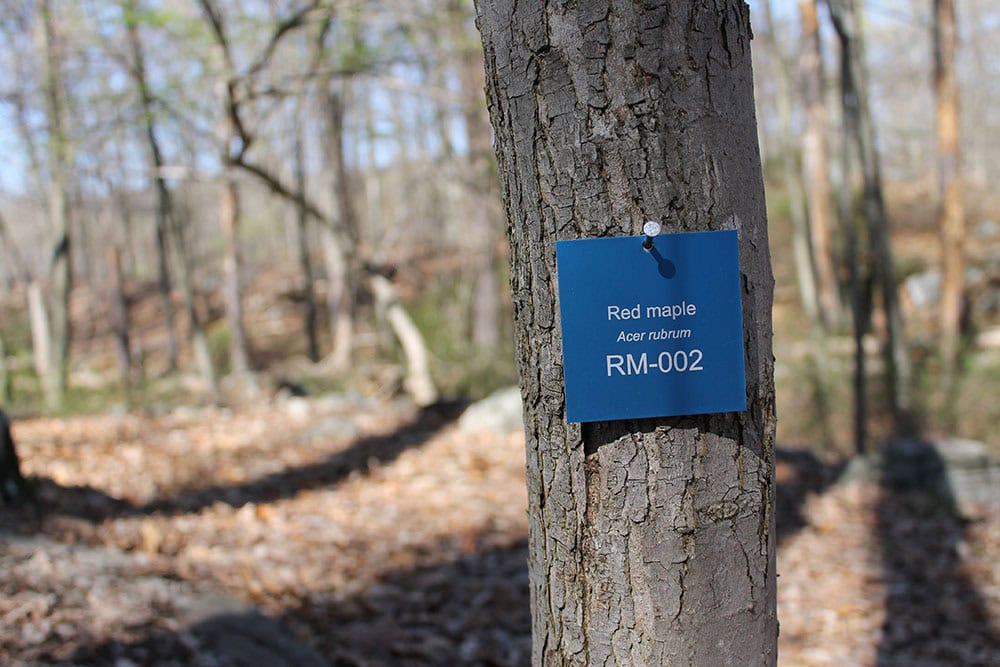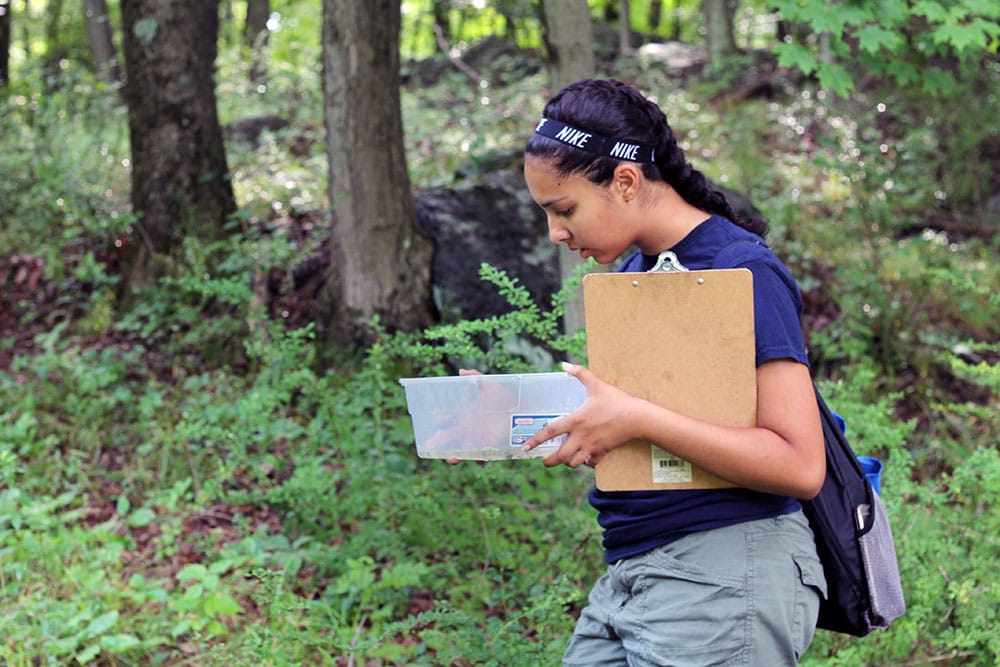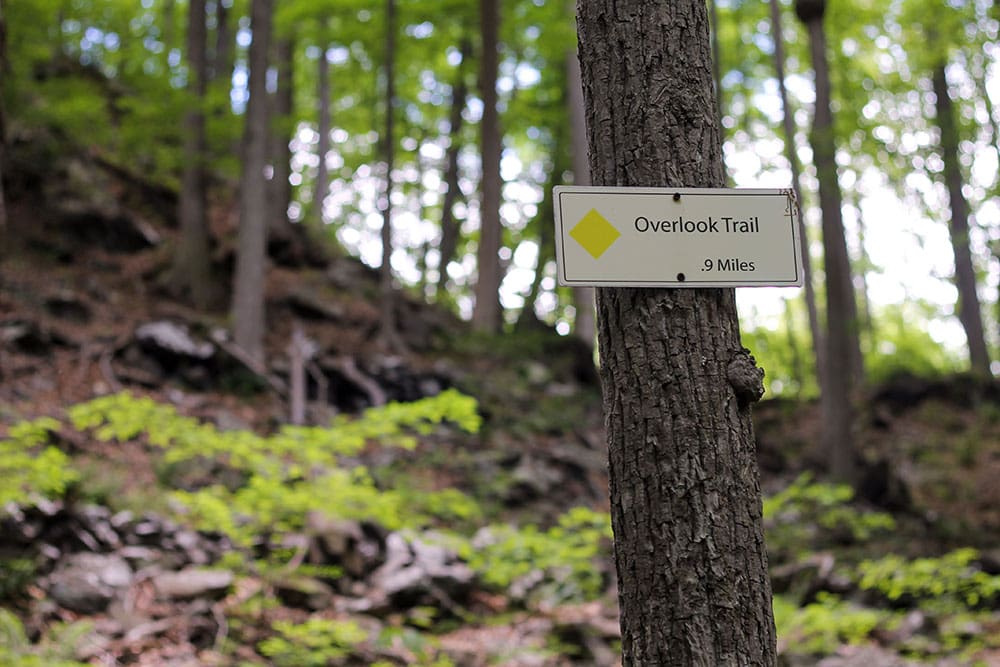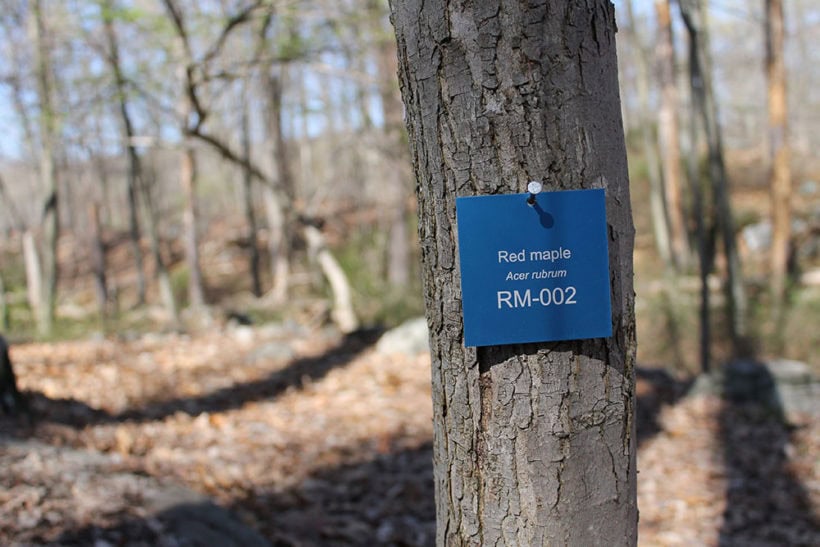Science & Stewardship Update

Our science & stewardship team works diligently to preserve our region’s biodiversity, provide opportunities to rising environmentalists, collaborate with regional organizations, and steward our 1,000-acre preserve. Here’s a snapshot of what we have been up to in the last few months.
We are working to inspire the next generation of environmental scientists

The Teatown Environmental Science Academy (TESA) is a summer program for high school students that provides them with invaluable hands-on experience studying our preserve while working with Teatown’s field scientists. 10 alumni of TESA from summers 2017, 2016 & 2015 attended The Westchester Science and Engineering Fair (WESEF) this year on March 17. In total, over 400 students from more than 30 schools participated in WESEF.
The following students continued their projects from the Teatown Environmental Science Academy under the continued mentorship of Teatown scientists, and won awards at this year’s WESEF:
1st Place Award in the Plant Science category
Caroline Smith, senior at Somers High School (TESA ’16): “The effect of the invasive species Eurasian milfoil (Myriophyllum spicatum) versus the native species coontail (Ceratophyllum demersum) on lake water quality.” This project was conducted at Teatown this past summer as a continuation of her work from 2016 in TESA.
2nd Place Award in the Animal Sciences category
Dylan Spedaliere, junior at Ossining High School (TESA ’16): “Investigating the microhabitat preferences of northern two-lined salamanders using abiotic and biotic indicators of water quality.” This project was conducted at Teatown this past summer as a continuation of his work from 2016 in TESA.
3rd Place Awards in the Animal Sciences category
Emily Olivier, senior at Yorktown High School (TESA ’15): “The biodiversity of macromoths in suburban developments.” This was a new project for Emily. She had worked on aquatic invasive species previously, and switched to studying moths, a passion of hers.
We’re keeping an eye on the health of local carnivore populations

In collaboration with the Environmental Management and Monitoring Alliance (EMMA), we are using camera traps to monitor carnivores at Teatown. This monitoring effort helps Teatown and EMMA to determine the presence of these important mammals at various urban, suburban and rural preserves, and determine conservation needs by recording long-term trends.
A new trail map is underway

We have partnered with the New York-New Jersey Trail Conference to create a new trail map, which will increase the accessibility of our 15 mile trail network. This new map is expected to be released in the coming months and will be available for purchase in our Gift Shop. Stay tuned for more details!
In the meantime, be sure to check out the trails that we have re-vamped in the last year including Hidden Valley and Hilltop.
We are taking steps to improve our region’s biodiversity

Japanese Barberry (Berberis thunbergii), a common invasive in our region.
Combating the invasive species on our preserve
A high proportion of the plants we have in our forest understories, shrub habitat, meadows, swamps and roadsides are invasive. To control all invasive plants on a 1,000 acre preserve would require vast amounts of resources (time and funding). We do however target specific areas of ecological and educational value, or target species that have the potential to spread rapidly. Here are some of the areas/species that we have targeted recently:
- Incised fumewort (Corydalis incisa): For the first time, we identified fumewort last spring in Wildflower Woods, and since then we have spent approximately 200 staff & volunteer hours on managing this invasive plant. We are preparing to closely monitor its return this spring, and manage it when/if we find it again.
- Cliffdale meadows: This year we hosted the Invasive Strike Force, a multi-organizational partnership in volunteer monitoring and management of invasive plants, to manage invasive species in our meadows. They targeted black swallowwort (Cynanchum louiseae), Japanese angelica tree (Aralia elata), reed canary grass (Phalaris arundinacea) and many other species.
Managing wildlife on our preserve
Our wildlife management initiatives are designed to minimize the negative impacts of wildlife on our preserve and protect the future of our forests.
- Beavers are industrious mammals; they take down trees for food, to build shelter and to block flowing water. Their return to Teatown after more than a century of absence is exciting yet provides unique challenges for the stewardship team. We have been hard at work clearing our spillways to maintain constant flow in our streams and erecting barriers to protect Wildflower Island.
- White-tailed deer are native to our forests; however their population in our region is far greater than what the forest can support. Our fragmented landscape provides abundant food, and our reduced predator population aids in the increasing deer numbers. Deer rely on vegetation for food, so when there are too many deer, native plants become scarce and invasive plants, most of which are not palatable to deer, can spread rapidly. Prior to starting deer management in 2014, Teatown’s deer population was estimated to be 70 deer/sq.mile (a sustainable population is closer to 15 deer/sq.mile). While we are observing a decline in population, plant regeneration is the goal of our Deer Management Program and this will take a long term commitment to achieve.
We are providing internship opportunities to rising environmental stewards

Rebecca (right) started as an intern at Teatown in May 2015 and recently moved on to become a full time employee at Rockefeller State Park.
We are proud to offer these opportunities that provide invaluable conservation experience in areas such as wildlife management, trail maintenance, and invasive species management to young scientists.
Rebecca Policello
Rebecca joined Teatown back in May of 2015 as a Forest Restoration Intern and returned this past summer as a Conservation Science Educator assisting with TESA. She excelled at every task we sent her way which included monitoring and managing invasive species, monitoring deer impacts to vegetation, collecting data in forest plots, assisting with camera trap studies, helping out with trail work and signage, and so much more. She recently moved on to become a full time employee at Rockefeller State Park!
Ralph Green
Ralph Green recently began work as Teatown’s Special Project Intern, working under Hillary Siener, Director of Environmental Stewardship. He is tasked with mitigating impacts from beaver (clearing spillways, monitoring Wildflower Island), assisting with trail maintenance, wildlife management activities and much more. He is an Environmental Studies major at Pace University, and plans to seek employment in conservation after graduating.
The Brian Horton Memorial Internship Fund
With money raised in the memory of Brian Horton, a former Teatown Trustee with a special interest in stewardship who sadly passed away late last year from cancer, we have created a fund to provide paid internships to students interested in environmental conservation.


